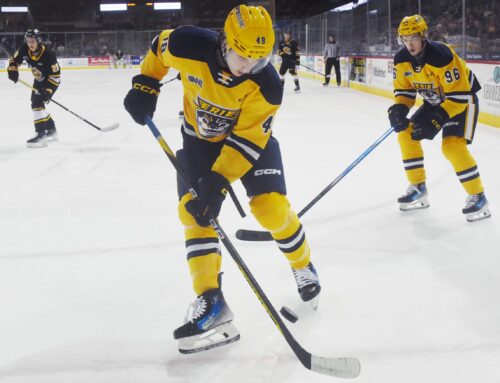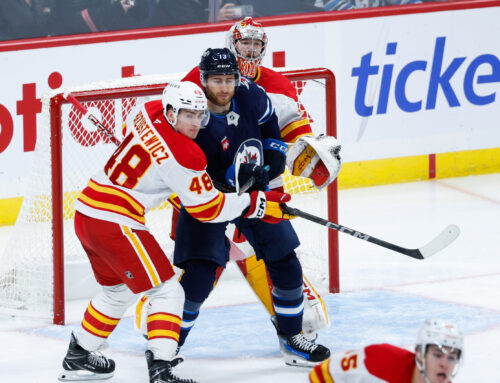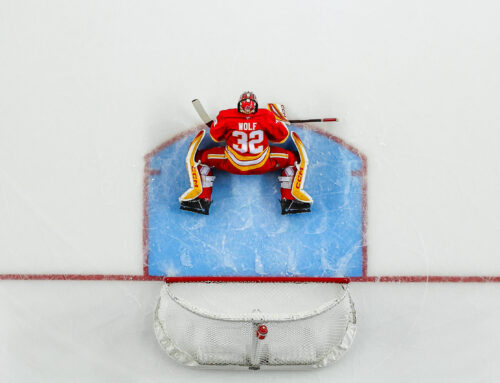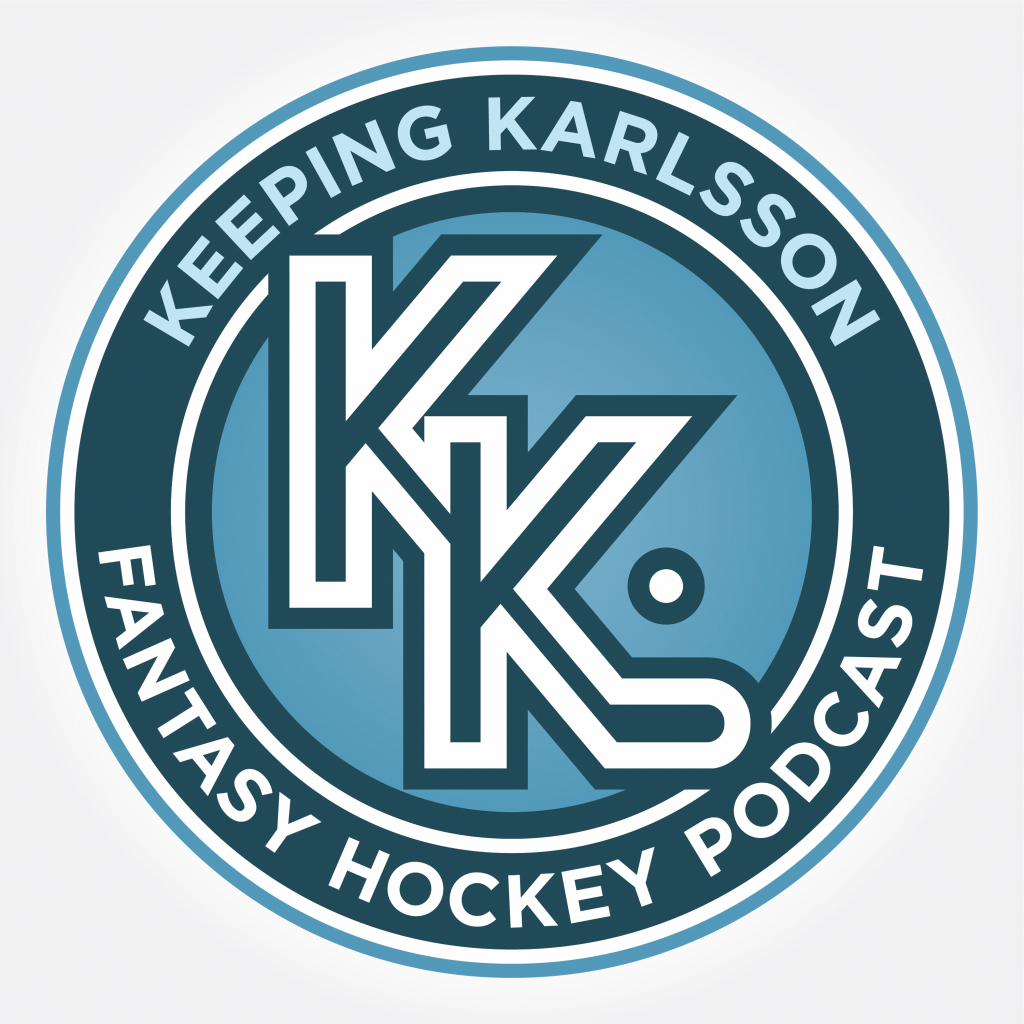Welcome back to The Journey, where we track the development of prospects as they excel in junior, make the NHL, and push towards stardom.
****
No one drafts a player expecting them to fall short, but the risk of unmet expectations is always looming. The real challenge is figuring out when to stick with a player and when to cut bait. It's easy to lose patience, but some players simply need time to hit their stride. That's the focus of today's edition: navigating the crossroads of prospect development. Even with the NHL’s influx of young stars, many players still require 4-5 years to realize their potential. The key is knowing who's worth the wait and who isn't. In fantasy hockey, patience might just be your greatest weapon.
This week, I am taking a look at a few players still in the early stages of their NHL careers, each one on a different team. All of them remain under the 200-game breakout threshold and likely will not hit that mark until around the midway point of next season. Some bring strong pedigree, others are flying under the radar, but despite that, their development is worth monitoring closely.
Luke Evangelista – Nashville Predators
Luke Evangelista's season has been a mixed bag, challenging on the surface, but full of encouraging signs beneath it. Through 64 games, he has registered nine goals and 19 assists, translating to a 0.43 points-per-game pace. Over a full 82-game schedule, that projects to 35 points. It is not a headline-grabbing total, and a slight step back from the 39 he put up in his rookie year, but those numbers alone do not paint the full picture, especially given the season Nashville has had.
The Predators have been through it. A struggling offense that ranks near the league's bottom with 203 goals scored and a minus-58-goal differential has dragged down individual performances across the board. Evangelista's production dip should be viewed through that same lens. Between roster turnover, injury troubles, and a lengthy absence from Roman Josi, it has been tough sledding. Evangelista missed nearly a month due to a lower-body injury early in the new year, which certainly played a role in his slower output.
From last year to now, his shooting percentage has dipped from 9.3% to 7.3%, which partly explains the muted goal totals. But he remains active offensively, averaging 1.9 shots per game and holding a strong IPP of 75.7%, meaning he has been involved in the vast majority of goals scored while on the ice. His xGF at 5v5 sits at 36.41, notably higher than the 26 goals he has been on the ice for, which suggests he is doing the right things but not getting rewarded, whether due to bad puck luck or linemates failing to finish which has been a big story in itself this season.
That disconnect between process and results is a recurring theme for Nashville this season, but Evangelista has mostly held up his end at this point in his NHL career. His role on the power play has been reduced this season, understandable given the offseason additions. While he has yet to lock down a spot on the top unit with Steven Stamkos, Ryan O'Reilly, or Filip Forsberg, the few times he has skated with that trio on the man advantage he looked very comfortable and could possibly thrive if given a longer look.
Despite that, he has chipped in five power-play points, finding chemistry in spurts with players like Fedor Svechkov, Michael Bunting, and Kieffer Bellows. Evangelista's game leans heavily on offense, which explains the lower hit and block totals of 27 and 12 respectively. He is not typically used in shutdown roles. That said, he has seen more all-situations deployment down the stretch, but his limited time on the PK shows he is still viewed primarily as an offensive winger.
Right now, Evangelista profiles as a solid middle-six winger with the potential to climb into a top-six role under the right conditions. He may not yet be a game-breaker, but the signs are there. As Nashville continues blending high-end veterans with emerging young talent, Evangelista looks like an important piece in that transition. If the Predators lean further into a youth movement, his role will likely grow, along with his production.
Philip Broberg – St. Louis Blues
I cannot help but wonder what Philip Broberg's season might have looked like if he had stayed healthy from start to finish. His transition to the St. Louis Blues has featured its share of ups and downs, but overall, it has been a season of meaningful progress.
He made an immediate impact after arriving in St. Louis, recording nine points in his first 12 games. He was logging over 20 minutes per night and playing in all situations, making the Oilers' decision to move on from him look questionable. That momentum, however, was disrupted by a lower-body injury that sidelined him for about a month. Upon returning, he had to re-establish himself in an already crowded defensive group that includes Justin Faulk, Cam Fowler, and Colton Parayko, with Torey Krug (out for the season). He found a steady partner in Faulk, and the two showed good chemistry as they produced offensively with 31 GF in 815 minutes of ice time.
Through 67 games played, Broberg has posted 29 points, a major leap from his previous career high of eight. His average ice time has remained steady at 20:30 per game, and while his power-play usage sits at just 17.50 TOI total, he has shown value in limited opportunities. Broberg is not breaking out offensively by any means, but the signs of growth are there. His 0.43 points per game translates to a 36-point pace over a full season, which is a solid mark for a 23-year-old still adjusting to a new system. His S% of 8.2% is slightly high for a defenseman but aligns with his increased shot volume of 1.4 SOG per game pointing towards a more confident, assertive style.
He is holding his own at 5v5, even if not at times dominating play and when playing with more experienced linemates albeit in smaller sample sizes with Fowler and Suter, his possession numbers improved.
Defensively, Broberg been on the ice for only 34 goals against at even strength all season and starts in the offensive zone just 47.5% of the time, so he is not being sheltered either. His 98 blocked shots show a commitment to the defensive side, even if his hit total of 44 remains modest. The challenge lies in his opportunity. St. Louis still leans heavily on its veteran defensemen, many of whom carry large contracts and defined roles. Broberg's deployment remains somewhat reactive. In that I mean limited power-play time, moderate penalty-kill usage, and steady top-four minutes alongside Faulk. While he has flashed the ability to contribute more meaningfully on special teams or against tougher matchups, the current blue line hierarchy makes it difficult to elevate his role.
So where is the upside? Well, when he is healthy, Broberg is logging meaningful minutes that too during a playoff push, something he never got in Edmonton. St. Louis has given him the structure to build confidence and consistency. His next step depends on how the Blues manage their aging blue line. A rebuild once expected may be postponed, limiting his short-term path to a full time top-pairing or power-play duties. Still, his performance this season points to a promising, mobile two-way defenseman with untapped potential.
Alex Laferriere – Los Angeles Kings
I for the most part did not expect much from Alex Laferriere heading into this season. After a quiet rookie campaign, it was fair to assume his role and production would remain modest. But Laferriere hit the ground running the first half of this season, delivering solid play early and showing noticeable growth.
From opening night through the end of December, he tallied 26 points in 36 games. After the calendar flipped, a minor injury sidelined him for four games, and his production slowed with just 11 points in 38 games since the new year. Still, he is pacing for 43 points over a full season, an impressive jump from his 23 points (12G, 11A) in 81 games last year. His sophomore campaign with the Kings has highlighted his versatility while developing offensive instincts, and a growing value in a middle-six role. He has posted 17 goals and 38 points across 73 games while averaging 1:41 minutes of power-play time per night which is up from 0:38 last season.
Whether you are looking at raw totals or development trajectory, he is trending in the right direction. Laferriere's scoring jump is not just luck – he is earning it. His shots per game went up from 1.8 to 2.5, and his 9.5% shooting percentage is solid and likely to stick. He has mostly been deployed in offensive situations and his best stretch came alongside Kevin Fiala and Quinton Byfield, where they outscored opponents 19-5. Laferriere chipped in with eight points during that time.
This early in his career, Laferriere is quickly establishing himself as a dependable 40–45 point winger with potential for more if he remains alongside top-six talent like Fiala or Byfield which he has spent most of his ice time with this season. His chemistry with those players, puts him in the most advantageous position and firmly in the Kings' long-term plans. Currently he is viewed more as a complementary winger, not a utility piece just yet, but he is starting to show more two-way awareness.
He is not a play driver, but he does not need to be. He thrives on smart positioning and timing, fitting well within the Kings’ structured system. He can complement skilled linemates and stays responsible and coachable, which makes him a valuable piece in L.A.'s shift toward a younger, faster roster.
Thanks for reading! See you next week. For more content/fantasy hockey analysis, or if there’s a prospect, you’d like me to cover, follow and message me on X @Punters_hockey.





 FLA
FLA EDM
EDM OTT
OTT NYR
NYR CHI
CHI BUF
BUF CAR
CAR WSH
WSH
